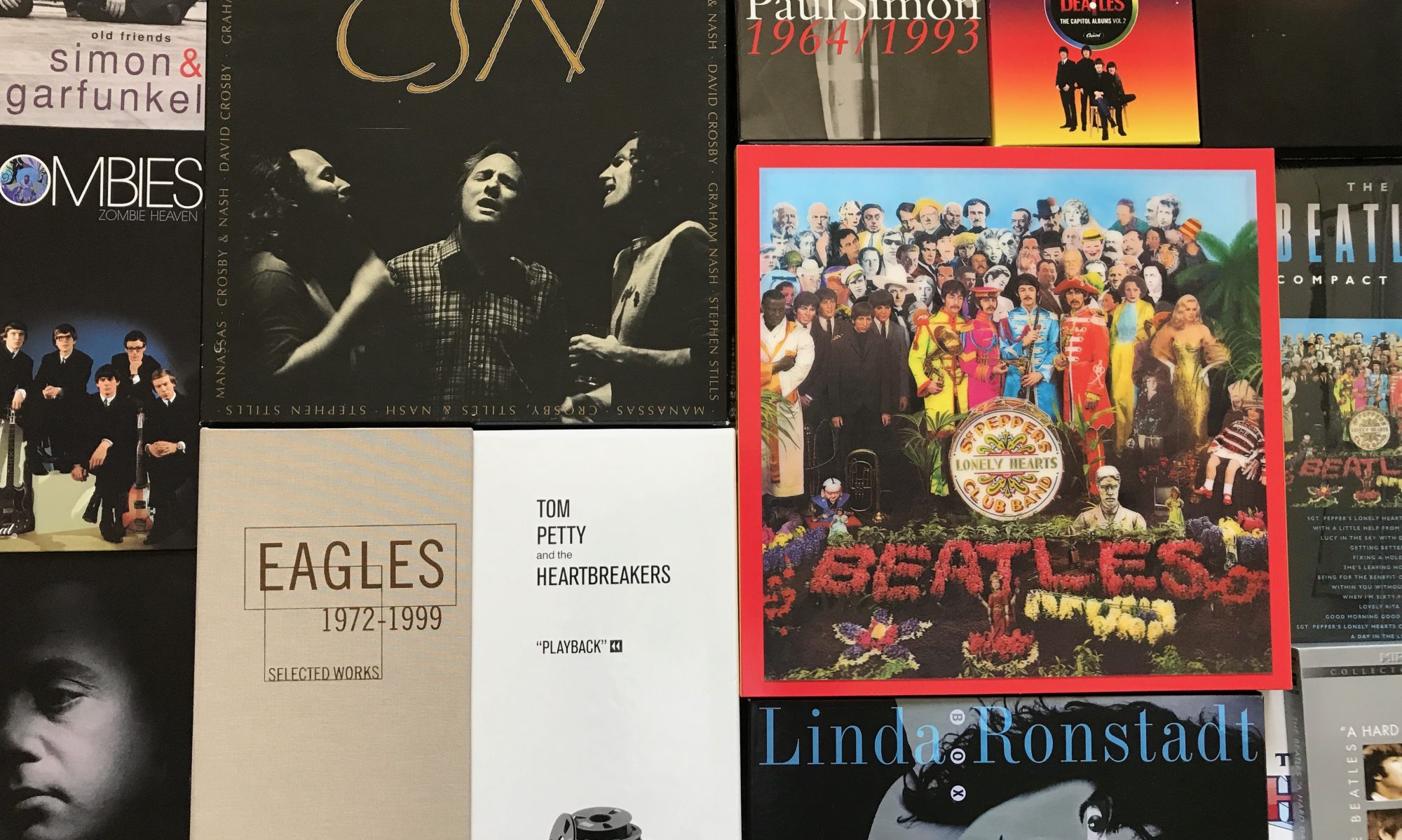Before streaming came along, if you wanted to know how an album sounded, you had to buy it. In the 60s & 70s the hints we got about whether we would like albums were the singles that were released to radio stations. Usually one single was released before the album came out, and then other singles were chosen from an album once the previous single peaked on the charts. Typically, three singles were released per album over several months.
 (Some of the picture sleeves from my 1960s singles.)
(Some of the picture sleeves from my 1960s singles.)
Vinyl singles were normally priced from 69-cents to 99-cents back then. Albums were priced around 3-dollars each. So, you could justify buying an album if you knew it had at least three good songs.
As we moved into the late 60s and early 70s, some FM stations would play album tracks mixed-in with the hits. Some even had an “album of the week” that they would play in its entirety. I heard The Beatles White Album before it hit the stores. Of course Beatles albums were always purchased right away without having to hear them. That was based on their track record, and other top artists were like that too.
 (The picture sleeves from some of my CCR singles.)
(The picture sleeves from some of my CCR singles.)
When Creedence Clearwater Revival started becoming popular, I just bought their singles like “Proud Mary”, “Bad Moon Rising” & “Green River”, but that led me to buying their albums too. That’s how it worked when you found artists you liked.
It was fairly common for artists to release three albums, followed by a Greatest Hits or Best Of collection (choosing 10 to 12 songs from their three albums). Part of the reasoning for that quick pace was that no one knew how long artists would be popular. They had to cash-in while they were hot. Those hits albums allowed us to replace our old singles with the stereo versions. Singles in stereo started being released in 1968.
Although some larger cities had music stores with listening stations, most record stores and department stores didn’t have them. Other ways of learning about albums included…recommendations from friends, by reading reviews in magazines like Rolling Stone, and by simply taking a chance.
Around 1968, mono albums were being phased out, so it was possible to find good albums on sale in the “dollar bin”. My first Moody Blues Days Of Future Passed was purchased that way. I loved it, bought the stereo version, and then bought all their albums (in stereo) as they were released.
High quality albums like that, and by artists like The Beatles and Simon & Garfunkel were not the norm. Honestly, if the album you bought had three to five good songs, you were lucky. Even some of our favorite artists could burn us. I bought albums by Neil Young that had only one or two good songs (at least to me). I kept buying his albums though, because he was always capable of coming up with songs I love. If albums had been streaming back then, I could have skipped some albums, or even just bought the digital tracks I liked.
Music consumers have it better today. We have so much music we can access, and the monthly streaming fees are way less than buying the albums and singles.
That system makes it much harder for artists to sell their music, since fans can simply stream all their albums. In addition, if the albums have any weak songs or lyrics that offend someone, the artists can be savaged online.
The negative aspect of streaming for fans is that with physical sales down, artists have to make most of their money through concerts, and that’s why ticket prices have soared in recent years.
It was great growing up with all the artists and music that eventually were grouped together as Classic Rock, and being able to see concerts at very reasonable prices. Yes, the music was much more expensive to buy, and it sure would have blown our minds to have instantly had access to all that music at once, the way it is today.


